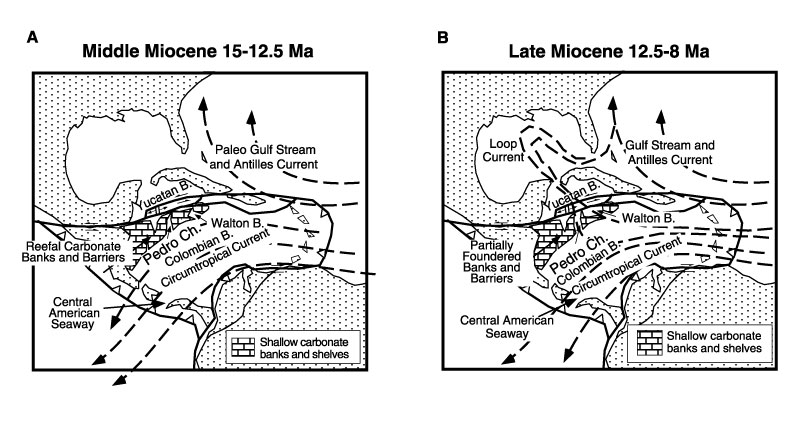Figure 5. Simplified reconstruction sketches of the Caribbean (after Pindell, 1994) illustrating several scenarios for closure and opening of gateways in the Caribbean. A. Scenario in the early middle Miocene, when nearly continuous carbonate banks and barrier reefs isolated the southern from the northern Caribbean basins, enhanced the water exchange between the eastern Pacific and the western tropical Atlantic, and minimized the development of a western boundary current within the Caribbean. B. Scenario at the middle to late Miocene transition, when the partial foundering and subsidence of the continuous shallow carbonate system along the northern Nicaraguan Rise opened the connection between the southern and the northern Caribbean basins; the Caribbean/Loop Currents were established as the consequence of this partial collapse. The establishment of the Caribbean/Loop Currents strengthened the Gulf Stream. A stronger western boundary current can explain the contemporaneous re-establishment of a strong North Component Deep Water in the high latitudes of the North Atlantic (Wright and Miller, 1996) that triggered a global ocean conveyor belt similar to the one we know today. This scenario can explain the carbonate crash on both sides of the Isthmus of Panama (see "Caribbean Gateways, Establishment of the Caribbean Current, and NADW Production," this chapter).

![]()